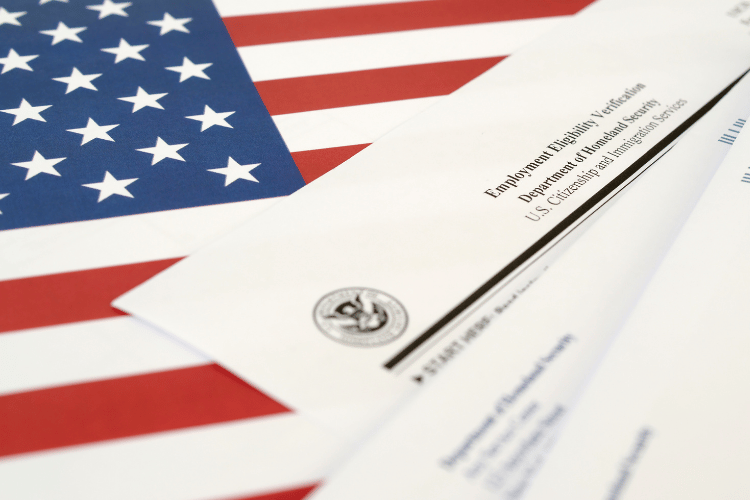
Quality Control in Spanish to English Translations for USCIS Applications
November 3, 2023

Translating your Spanish documents into English is crucial in USCIS (United States Citizenship and Immigration Services) applications. However, a simple mistranslation or oversight can derail the process.
You want to ensure Quality Control in Spanish to English Translations for USCIS Applications to avoid delays. Anyone fluent in both languages can translate your papers, but a professional translation service brings expertise to the task.
Here’s everything we have on Spanish to English USCIS translations to help you breeze through your citizenship or green card application.
Translation Process for USCIS Documents
Accurate English translation of your original Spanish documents is vital to a smooth USCIS application.
Here’s how to get your translations done:
Step 1: Find a Qualified Spanish-to-English Translator
While your bilingual aunt may seem like a convenient option, you need professional translators to do your USCIS translations.
Why?
Well, USCIS documents require zero errors and high accuracy. Our Certified Translators are experts at their job, not to mention they know the agency’s requirements inside and out.
They also have native or near-native fluency in both Spanish and English. They can capture the context of the original document and produce high-quality translations.

Step 2: Request a Translation Quote
After you’ve found your translator, it’s time to request a quote. But before we dive into pricing and delivery dates, let’s quickly recap the documents that need USCIS translations:
- Birth certificates
- Marriage certificates
- Divorce papers
- Police records
- School diplomas or transcripts
To keep everything on track with your budget and timeline, you can submit electronic copies of your USCIS documents to your translator.
This way, they can provide you with an accurate quote based on the length and complexity of your documents.
Step 3: Wait!
The translation service will assign a translator to work on your paperwork. The translator will then translate the document and make sure it matches the original format as much as possible.
Step 4: Get Your Certified Translation and Certification of Translation
You’ll receive an electronic copy of the certified translation. Original hard copies are also available at an additional fee.
Your translator should include a signed certification confirming the translation is 100% accurate and complete. The statement should bear the full name of the translator certifying the translation.
Once you have the documents, you can now submit them to USCIS along with the original ones.
Remember, immigration officers will inspect and cross-reference both sets of documents. They’ll ask for a Request for Evidence (RFE) if they find any inaccuracies or deem the translation unacceptable.
Common Quality Control Issues in Spanish to English Translation for USCIS Applications
Consider these quality control issues regarding Spanish-to-English translations in USCIS documents:
1. Broad Range of Spanish Dialects
Many countries speak Spanish, and each region has its own dialect and unique linguistic distinctions. Translators must know these differences and choose the correct dialect the document needs.
For instance, Nicaraguan Spanish uses fewer consonants and combines different vowels. Another example is Catalan Spanish having eight vowels compared to regular Spanish, with only five.
2. Grammar and Syntax Errors
Spanish and English have different grammar and syntax rules. What’s more, Spanish has the extra letter “ñ” in its alphabet.
One glaring difference between the two languages is how nouns work. All nouns in Spanish have gender, which means inanimate objects are either feminine or masculine. Not only that, but they can change the words that come before or after them.
Translators should convey the meaning of the Spanish text while following the grammatical rules of English.
3. False Cognates
Cognates like “curioso” and “curious” come from the same root word and express the same meaning.
Meanwhile, false cognates are words that look similar in Spanish and English but have different meanings. Translators should be cautious of them to avoid mistranslations.
For example, the Spanish word “éxito” means success in English, not exit. Similarly, “fabrica” is a factory, not fabric.
Quality Assurance in Spanish to English Translation for USCIS Applications
Professional translation companies have robust quality control measures to ensure the completeness, accuracy, and proficiency of translated documents.
1. Editing the Translated Text
Skilled editors check the translations for linguistic accuracy, consistency, and adherence to USCIS requirements. They also verify the correct usage of terminologies and jargon to eliminate errors and mistranslations.
This thorough review process helps to catch any errors or inconsistencies. It also ensures the final translation is of the highest quality.
2. Proofreading the Translated Text
Proofreading is another essential step in quality control. It involves reviewing the document for spelling, grammar, syntax, and punctuation errors.
They ensure the final output is flawless and maintains the meaning and clarity of the original document.
3. Peer Review

Peer review is a collaborative approach to quality assurance and brings different perspectives to the table. The idea is to have a second or third set of eyes to catch mistakes and nuances in the translated document.
Another qualified translator looks over the text during a peer review. They double-check everything for clarity, consistency, and consistency. They also make sure the translation will meet the USCIS standards.
Peer review is handy when dealing with legal jargon, technical terms, or cultural references.
4. Using Automated Tools
Professional translators use several tools to streamline the translation process. Here are the best apps that assist translators in doing their jobs:
Translation Memory Software
This nifty tool stores previously translated segments in a database, allowing translators to use them for future translations.
When the software detects familiar text, a suggested translation will pop up on the screen. The translator can then accept or ignore the suggestion.
Translation memory software ensures consistency in style and terminology. Not only that, but it can save time when working on large volumes of text or dealing with repetitive content.
Spelling and Grammar Checkers
These programs scan and flag documents for grammar and spelling blunders that need fixing. You’ve probably seen them in action if you’ve ever used Microsoft Word.
Advanced apps like Grammarly offers even more in-depth checks and suggestions to make translations shine.
Translation Management System (TMS)
TMS software is a centralized platform for managing translation projects. It helps streamline the workflow, track progress, and facilitate communication among translators, editors, and project managers.
TMS can also have quality control features like automated checks for style and terminology consistency.
Conclusion
Professional translation services perform quality control in Spanish to English translations for USCIS applications in various ways. These include editing, proofreading, peer review, and the use of automated tools.
